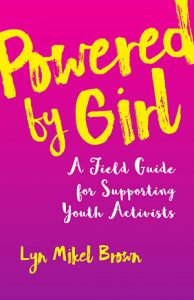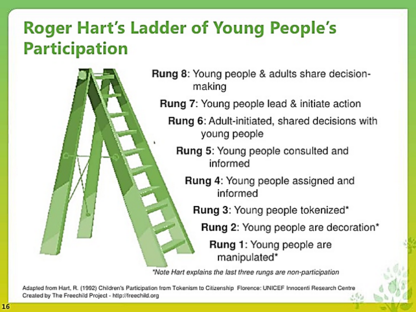“Let’s face it, we are undone by each other. And if we’re not we’re missing something,” claims philosopher and feminist and queer theorist Judith Butler in her book Precarious Lives. If we really listen and open ourselves to their insights and ideas, working with youth can be our undoing, an experience of unraveling, a letting go of the predictable. In this space we become open to new possibilities and, in the words of educator Maxine Greene, we can begin to imagine the world as if it could be otherwise.
In her book, Powered By Girl, SPARK Movement co-founder Lyn Mikel Brown identifies 8 conditions necessary for effective intergenerational youth organizing:






